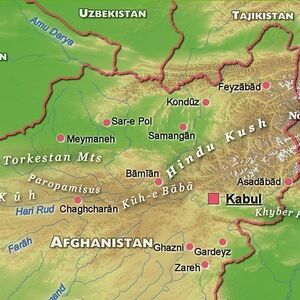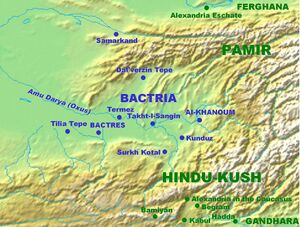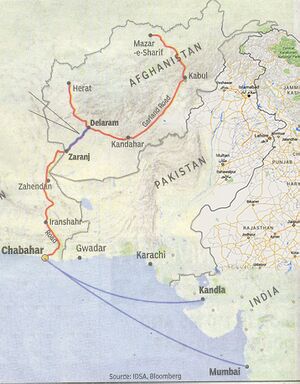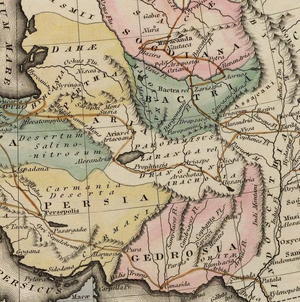Kunduz
| Author:Laxman Burdak, IFS (R) |





Kunduz (Hindi: कुंदुज, Pashto: کندز; Persian: قندوز) is a city in northern Afghanistan, which serves as the capital of Kunduz Province. Kunduz is the site of the ancient city of Drapsaka.
Variants of name
- Kunduja (कुंदुज) (AS (p.198)
- Drapsaka (Buddhist)
- Drapsaca (Arrian, Anab.3.29)
- Kondoz
- Konduz
- Kondûz
- Kuhandiz
- Kundûz
- Qhunduz
- Qonduz
- Qondûz
- Walwalij
Location
Kunduz is located in the historical Tokharistan in the region of Bactria. It is linked by highways with Mazar-e Sharif to the west, Kabul to the south and Sher Khan Bandar to the north. Kunduz is located at an elevation of 391 meters above sea level.
Etymology
The name of the city is derived from Persian compound, kuhan/quhan diz, "old/ancient fort" or from Turkic konak/konut ("residence, palace, court, housing, established dwelling area, city, town, village"), from Proto-Turkic *kon-, "to settle down/to perch." Alternative derivations also include Turkic kündüz ("day, daylight"), from Proto-Turkic kün, "day/sun".
Interestingly, until the 1960s, the city served as the capital to the now-defunct province of Qataqan, itself meaning "Old/Ancient city" (from Turkic kata ("old/ancient') and Eastern Iranian (Sogdian) kand or Common Turkic kent, "fort", "town".
Jat clans
History
Kunduz is the site of the ancient city of Drapsaka. It was a great center of Buddhist learning and very prosperous during the 3rd century AD.
The city used to be called Walwalij[1] and the name Kuhandiz began to be used from the Timurid time.
Visit by Xuanzang in 630 AD
Xuanzang Continuing southward, reached the Amu Darya and Termez, where he encountered a community of more than a thousand Buddhist monks.
Further east he passed through Kunduz, where he stayed for some time to witness the funeral rites of Prince Tardu, who had been poisoned. Here he met the monk Dharmasimha, and on the advice of the late Tardu made the trip westward to Balkh (modern Afghanistan), to see the Buddhist sites and relics, especially the Nava Vihara, which he described as the westernmost vihara in the world. Here Xuanzang also found over 3000 non-Mahayana monks, including Prajnakara,[2] a monk with whom Xuanzang studied early Buddhist scriptures. He acquired the important text of the Mahāvibhāṣa here, which he later translated into Chinese.
कुंदुज
विजयेन्द्र कुमार माथुर[3] ने लेख किया है ...कुंदुज (AS (p.198) निवासियों को महाभारत, सभा पर्व 52 में कुंदमान कहा गया है. यह देश संभवत है जैसा कि प्रसंग से इंगित होता है अफगानिस्तान की उत्तरी सीमा पर रहा होगा (देखें डॉ.मोतीचंद्र: उपायन पर्व- ए स्टूडी)
In Mahabharata
Kundamana (कुन्दमान) Mahabharata (II.48.13)
Sabha Parva, Mahabharata/Book II Chapter 48 describes Kings who presented tributes to Yudhishthira. Kundamana (कुन्दमान) is mentioned in Mahabharata (II.48.13).[4].... the Kashmiras, the Kundamanas, the Paurakas, the Hansakayanas, the Sivis, the Trigartas, the Yauddheyas, the Rajanyas, Madras and the Kaikeyas,....
References
Back to Jat Places in Afghanistan

